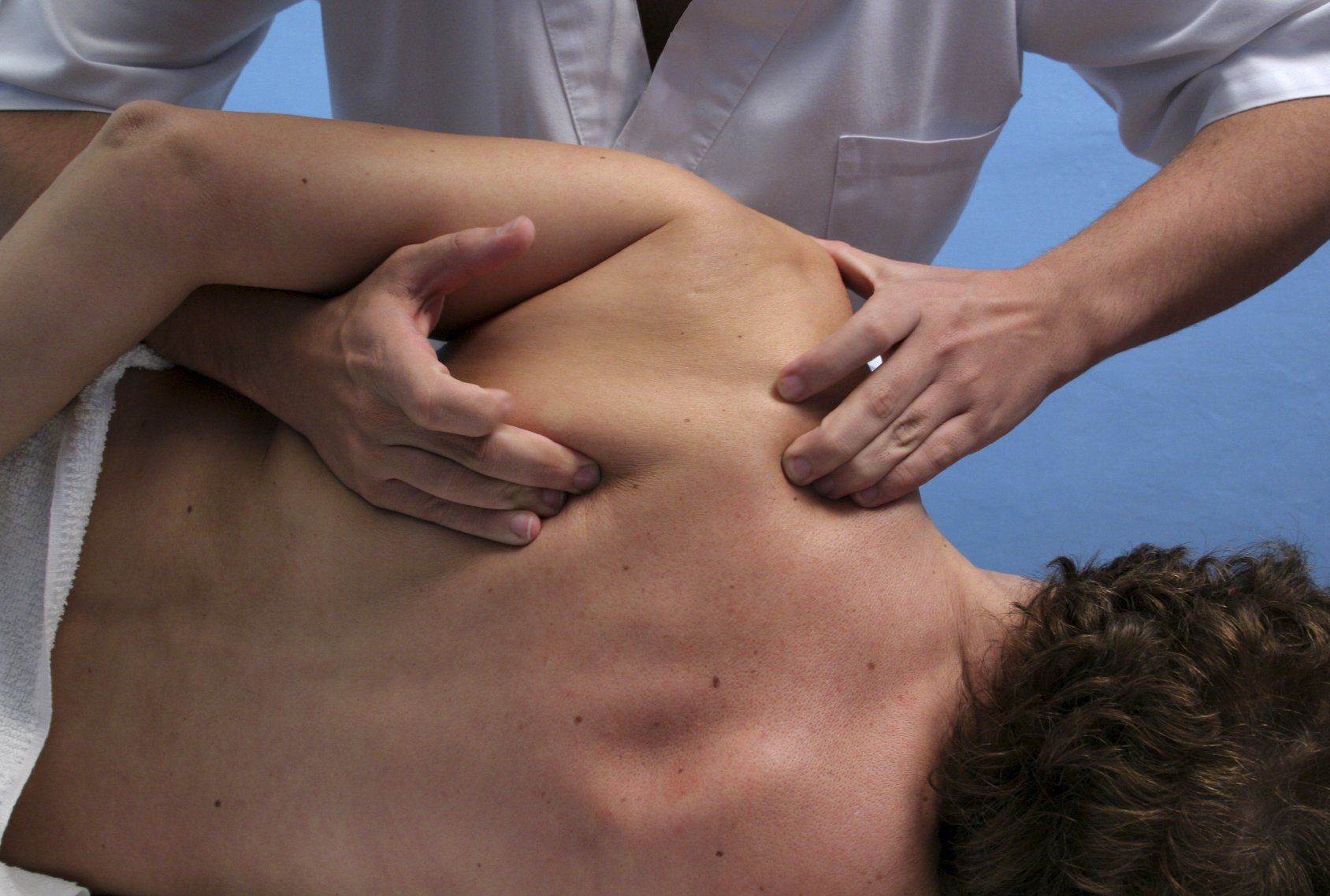You, Will, Feel a Difference!
Neuromuscular Therapy may also help to repair and heal muscle and tendon injuries, as well as repair scar tissue from torn or injured muscle and tendon. Contact us if you are still feeling pain and other unwanted effects from that leg, back shoulder or neck injury from College or long time ago.
- Much of muscular pain, tension, and reduced range of motion of joints are due to compromised neuromuscular fascia: Trauma, Dehydration, inflammation and dysfunction in the alignment of collagen fibers.
Fascial therapy releases shortened fascia and removes the adhesions of scar tissue that cause pain and reduced range of motion.Dehydration can be caused by trauma (fluid loss) or poor diet (foods that are high in salt or have a diuretic action). After 10 days of dehydration, an inflammatory response is elicited. The response consists of many chemical mediators such as histamine, dopamine, heparin and catecholamines. These contribute to creating and maintaining tension in the fascial tissue.
During these 10 days, many of the fibers degrade and create cross-linkages. Dehydration also includes loss of ground substance, the mucopolysaccarides, which lubricates the fibers and acts as a gel that disperses shock. This loss facilitates the creation of more cross-linkages causing the fascia to become less elastic.
With the loss of ground substance, the fascia is not able to glide freely over other tissue and structures. As this process continues, collagen fibers are placed into dysfunctional alignment causing incoherent lines of force pulling on the fascia and the underlying tissue. Normal range of motion becomes restricted and muscles utilize more energy to accomplish smaller movements 1.
- Loss of Range Of Motion May cause the following issues:
- fibrosis and/or atrophy.
- Loss of ground substance;
- cause cross-linkages and adhesions between planes of fascia and underlying tissue.
- These restrictions prevent the full expression of joint movement.
Sources of muscle weakness include:
- physical constriction caused by trauma or pain collagen creating planes of pulling force (postural dysfunction)
- structures in the fascial matrix adhered or compressed
- compromised nerves
- Trigger Points.*
Muscle weakness may be caused by trauma, postural dysfunction, pain, adhesions or neurological deficit 2.
*A trigger point is a “hyperirritable spot within a taut band of skeletal muscle located in the muscular tissue and/or its associated fascia4.”
However trigger points can also be found in all types of non-contractile connective tissue. Myofascial trigger points are characterized by taut and shortened tissue with a predictable pain referral pattern5. (Janet Travell)
- Fascial therapy has a direct effect in breaking down adhesions and lengthening shortened fascia. Scar tissue can be released from underlying tissue, giving it a softer look, and increasing range of motion.
Scar Tissue
Primarily made up of collagen fibers, scar tissue is created by the body in response to trauma, inflammation or prolonged immobilization (decreased ROM). Types of scar tissue include:- contracture - a shortening of connective tissue (fascia) around a joint or joints
- adhesion - loss of ground substance causing cross-linkages (made up of ‘sticky fibers’) between soft tissues;
- scar tissue adhesion - an accumulation of collagen fibers created in response to trauma to prevent re-injury (non-functional scar tissue) causing shortening and stiffness of the involved tissue;
- fibrotic adhesion - low-grade inflammation due to chronic postural problems or unresolved injuries that can cause decreased range of motion;
- irreversible contracture - when muscle is replaced with non-contractile fibrotic tissue causing severe or permanent loss of range of motion;
- proud flesh (excess of granulation tissue) - abnormal healing in which tissue is made up of disorganized collagen fibers and capillaries hypertrophic scarring - when the body overproduces collagen creating a raised scar;
- keloid - type of hypertrophic scar, where the overproduction of collagen fibers extends beyond the original injury which can grow indefinitely and form neoplasms or tumors;
In general, scar tissue represents the body’s ability to heal itself from trauma and inflammation.
Who We Are
Zening Wholistic
Expert Team Of Healers
Quality Guaranteed
Zening's Healers & Massage Therapists are some of the most effective you will find in the area, with greater combined experience than the age of any one of us.
You, Will Feel a Difference!
Contact Us Today
Call Us
Feel free to give us a call.
Call/Text: 646-456-5221
Visit Us In
Midtown Manhattan
Midtown Manhattan
151 West 30 Street 3rd fl. New York, NY 10001
In the Vicinity of The 34th Street Subway Stations.
OPENING HOURS
Monday - Friday: 10:00 AM - 9:00 PM
Saturday 10:00 AM - 8:00 PM
Sunday 10:30 AM - 07:00 PM

